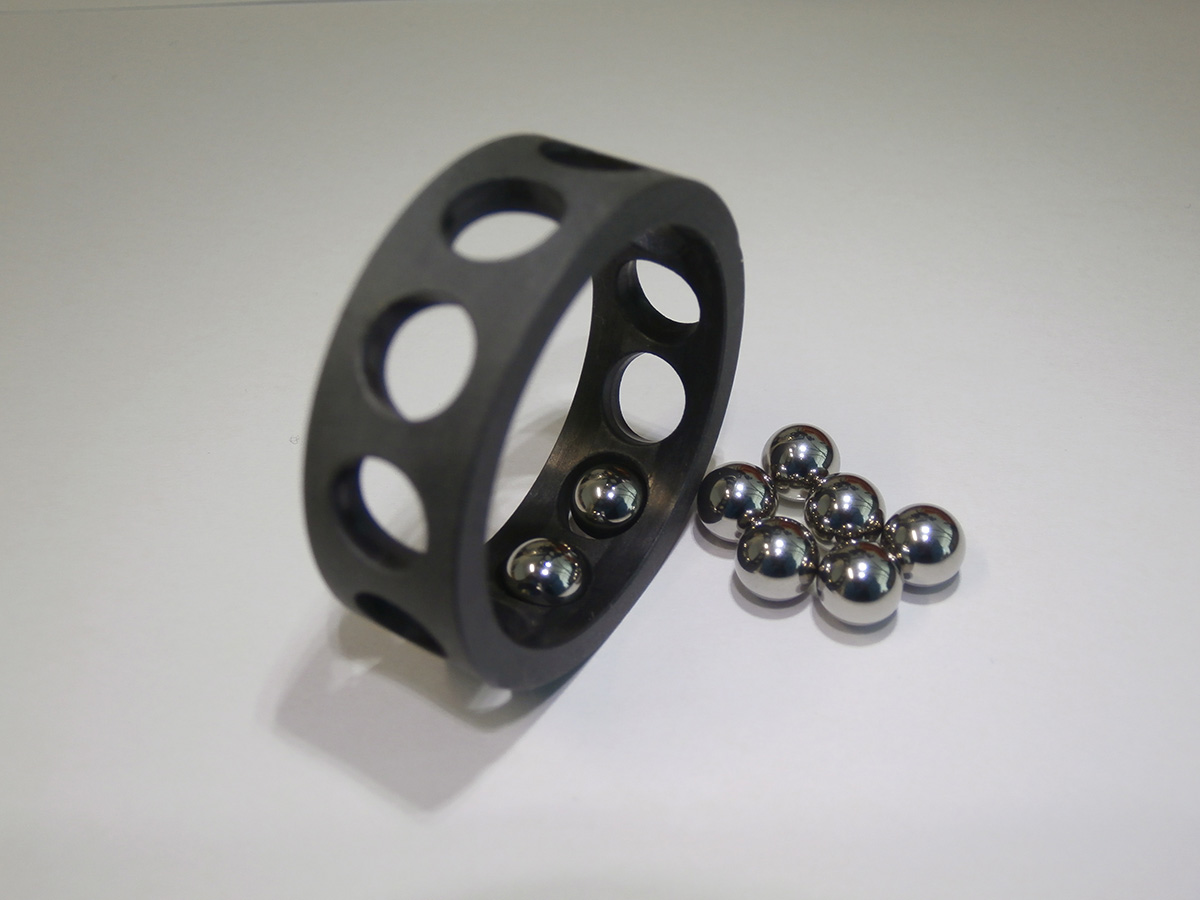More than 20 million rotations
Ensinger Sintimid is launching a new high-performance plastic named TECASINT 8591 for tribological applications in the space industry. By using PTFE and adding special lubricants and fillers, the newly developed product will also demonstrate outstanding self-lubrication properties under the conditions found in space.
As part of a cooperation with the European Space Agency (ESA) and the contractual partner Aerospace & Advanced Composites (AAC), Ensinger Sintimid took part in the project “Self-Lubricating Polymer Matrix Composites” (SLPMC2). The aim was to develop an inherently lubricating material that exhibits a low coefficient of friction throughout the entire service life of the bearing. In addition, the European partners wanted to reduce dependence on overseas material suppliers.
Communication, meteorology and earth observation
Weather, communication and earth observation satellites circle in low Earth orbit (LEO). The sensors, antennas and reflectors are unfolded as soon as the satellites have reached their orbit. It must be ensured throughout their service life that the systems retain long-term functionality under the tough conditions encountered in space.
The mechanisms for unfolding these systems are equipped with appropriate ball or linear bearings. Friction along with wear and tear place high demands on these components. A particular challenge is, first and foremost, maintaining a constant ball bearing torque over the course of at least 20 million bearing revolutions. Research findings show that TECASINT 8591 features a lower ball bearing torque compared with the competitor product PGM-HT. Undesired stick-slip effects do not occur. Alongside its tribological properties, the material complies with the outgassing limits stipulated by ECSS Q70-02 and exhibits low levels of post-shrinkage.
Approval by the ESA
During the project phase, the company AAC examined all relevant properties of the new material and, together with industry partners, tested the initial applications. Even at cryogenic temperatures and under vacuum, the material demonstrated excellent friction properties. Following analysis of the results, TECASINT 8591 was approved by ESA as an alternative to the current single-source material PGM-HT. The first customers are already testing the material for bearing cages in unfolding antennas and reflectors.
TECASINT 8591 is available in the form of plates up to 60 mm thick and rods with diameters of up to 60 mm. Alongside this new product, Ensinger Sintimid also offers a variety of other materials which have already proved their worth in space applications. A team of experienced engineers supports customers in the selection of materials.
Detailed information concerning the SLPMC2 Project can be found on the ESA website: https://connectivity.esa.int/projects/slpmc2

Ball bearing cages are among the typical TECASINT 8591 applications